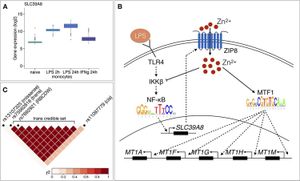Phosphorylation is one of the key mechanisms by which cells regulate signaling pathways, influencing everything from cell growth to differentiation. Despite the importance of phosphorylation, traditional methods of studying protein dynamics within cells have often been limited to either surface proteins or require invasive techniques.
To tackle these challenges, researchers have developed Phospho-seq—an innovative integrated approach to profile intracellular and intranuclear proteins, including various phosphorylation states. This technology allows scientists to quantify the activities of proteins involved in classically studied signaling pathways all at single-cell resolution, marking a significant advancement for neurodevelopment studies.
Phospho-seq combines custom antibody panels with single-cell sequencing technologies to provide comprehensive insights. By utilizing commercially available reagents and optimizing conjugation methods, this method facilitates the creation of vast antibody panels for diverse protein targets. The system is capable of profiling up to 64 intracellular proteins, including 20 phospho-states, accommodating the complex nature of cellular signaling. This allows for easy adaptation to different scientific questions and biological systems.
The potential applications of Phospho-seq are wide-reaching. The authors of the study applied this approach to retinal organoids and brain organoids, shedding light on gene regulatory relationships and how they interact with signaling pathways during neural development. Specifically, they uncovered novel interactions and signaling differences between various cell types, including photoreceptors and retinal pigment epithelium, underscoring how metabolic demands shape signaling dynamics. The application of this workflow may significantly advance our insights across different tissues and systems.
By linking protein expression levels to chromatin accessibility and gene expression through sophisticated computational techniques, Phospho-seq enables researchers to reconstruct gene regulatory networks and assess the connection between cellular signaling and gene regulation. For example, the researchers identified previously unreported differences in how cells respond to growth signals, illuminating the heterogeneity of signaling behaviors across cell types.
Phospho-seq’s capacity to provide broad insights means it could facilitate novel discoveries not only within neurodevelopment but also across various biological disciplines such as immunology and cancer research. Future studies will likely explore the integration of additional modalities to capture nuanced cellular dynamics, potentially employing technologies for genetic screen integration and spatial profiling.
The capability of Phospho-seq to translate detailed protein interaction data to cellular function sets the stage for significant advancements. This technology could fundamentally change how scientists assess the role of signaling pathways across health and disease, refining their ability to explore potential therapeutic avenues. With continued exploration and adaptation, Phospho-seq may fully realize its promise as a cornerstone tool for modern cellular biology.



